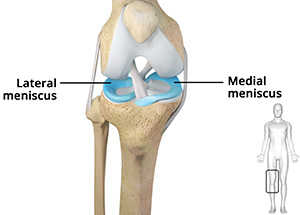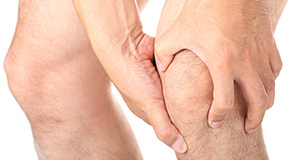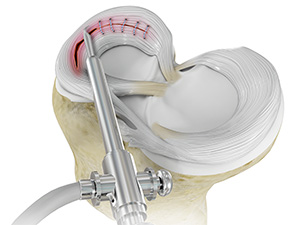Meniscal Repair
What is the Meniscus?
The two wedge-shaped cartilage pieces present between the thighbone and the shinbone are called menisci (singularmeniscus). They stabilize the knee joint and act as “shock absorbers”.
What are Meniscal Tears?
A meniscus tear is the most common knee injury in athletes, especially those involved in contact sports. A sudden bend or twist in your knee can cause the meniscus to tear. This is a traumatic meniscal tear. Elderly people are more prone to degenerative meniscal tears as the cartilage wears out and weakens with age.
Symptoms of Meniscal Tears
A torn meniscus causes pain, swelling, stiffness, catching or locking sensation in your knee, making you unable to move your knee through its complete range of motion.
Diagnosis of Meniscal Tears
Your orthopedic surgeon will examine your knee, evaluate your symptoms, and medical history before suggesting a treatment plan.
Treatment of Meniscal Tears
The treatment depends on the type, size and location of the tear, as well as your age and activity level. If the tear is small, with damage only in the outer edge of the meniscus, non-surgical treatment may be sufficient. However, if the symptoms do not resolve with non-surgical treatment, surgical treatment may be recommended.
Surgical Treatment of Meniscal Tears
Knee arthroscopy is the commonly recommended surgical procedure for meniscal tears. The surgical treatment options include:
- Meniscus removal (meniscectomy)
- Meniscus repair
- Meniscus replacement
Surgery can be performed using arthroscopy where a tiny camera will be inserted through a tiny incision, which enables your surgeon to view the inside of your knee on a large screen. The surgery will be performed through other tiny incisions. During meniscectomy, small instruments called shavers or scissors may be used to remove the torn meniscus. In arthroscopic meniscus repair, the torn meniscus will be pinned or sutured depending on the extent of the tear.
Meniscus replacement or transplantation involves the replacement of a torn cartilage with the cartilage obtained from a donor or a cultured patch obtained from the laboratory. It is considered as a treatment option to relieve knee pain in patients who have undergone meniscectomy.








